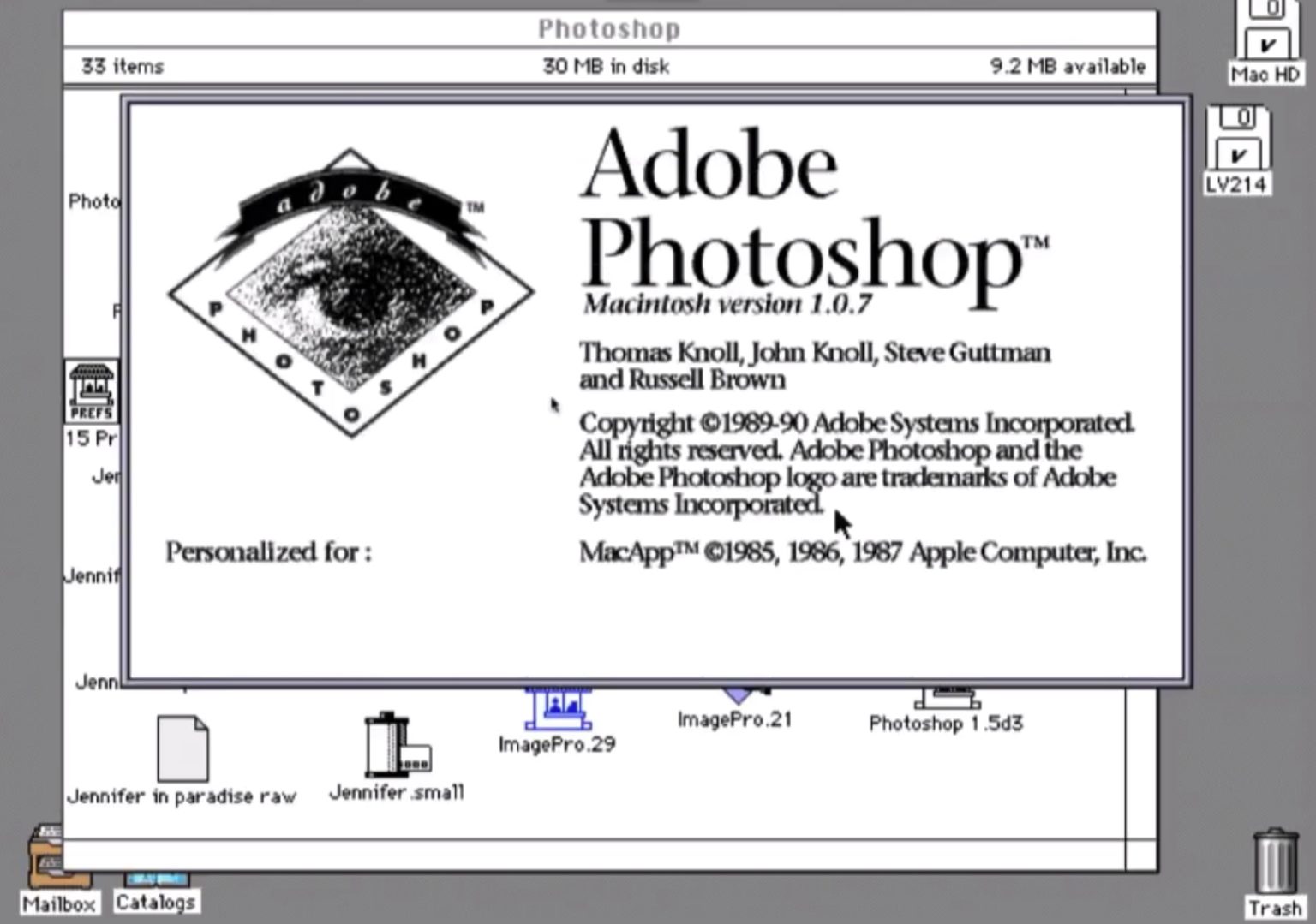 February 19, 1990: Adobe ships the first commercial version of its soon-to-be-iconic Photoshop photo editing software. The Photoshop launch, exclusively on the Macintosh, gives users new powerful tools for tweaking digital photographs.
February 19, 1990: Adobe ships the first commercial version of its soon-to-be-iconic Photoshop photo editing software. The Photoshop launch, exclusively on the Macintosh, gives users new powerful tools for tweaking digital photographs.
The groundbreaking software debuts for Mac System 6.0.3. Priced at $895, Photoshop will quickly become the standard editing tool for graphics professionals. Whether they work for advertising agencies, news organizations — or, frankly, anywhere else — Photoshop users take advantage of the program’s digital darkroom tools to seamlessly manipulate images.
Photography will never be the same.
Photoshop launch: From ILM to Adobe
Brothers Thomas and John Knoll developed Photoshop. Thomas Knoll began developing the software as a Ph.D. student at the University of Michigan in 1987. Discovering that his Mac Plus computer would not display grayscale images correctly, he started coding a program to help.
Thomas’ brother John ran the special effects department at George Lucas’ Industrial Light and Magic. Together, they developed Thomas’ brainchild into an image-editing program they called Display. They later renamed it Image-Pro, then Photoshop. The Knolls completed the first alpha version, Photoshop 0.63, in October 1988. However, they never released that version to the public.
Adobe Systems purchased the program, then released it in February 1990 as Adobe Photoshop, a standalone software application. Once Photoshop hit the mass market, it changed image editing forever.
Photoshop on Mac changes the image-editing game
Compared to today’s Photoshop, version 1.0 seems, unsurprisingly, quite primitive. Still, the Photoshop launch represented an enormous leap forward compared to other graphics applications available at the time. Version 1.0 boasted revolutionary tools like the Lasso and Magic Wand, which made it easy to select and copy image elements.
Much like the concerns over “deepfakes” today, Photoshop woke up people to the ways in which computers could be used to manipulate images. In 1990, the year Adobe released Photoshop 1.0, photography critic Fred Ritchin wrote:
“[As] the public begins to perceive photography as unreliable, those who control its uses should clearly understand what they are doing to a photograph. They should address both the question of image manipulation by the computer and the more general tendency to use photographs to illustrate preconceived ideas and self-fulfilling prophecies.”
For a fun trip down memory lane, check out this InfoWorld article about the Photoshop launch from early 1990. It compares Adobe’s software to the other advanced graphics editor of the time, Letraset’s ColorStudio.
The piece does a good job of summarizing just what a game changer Photoshop was at the time. Even if, as the author noted, it was “a fairly big program … [taking up] about 2 megabytes.”
Photoshop sets a new standard
In the years that followed the Photoshop launch, the software became a standard application for anyone who works with graphics. Today, more than two dozen versions later, Adobe sells Photoshop as subscription software and bundles it into its Creative Cloud suite. And the iPad version of Photoshop continues to add desktop-class features.
Adobe donated the original source code for Adobe Photoshop 1.0 to the Computer History Museum in February 2013.
While other image editors rose to challenge it over the years, Photoshop remains the gold standard for many people. And it all started with the Photoshop launch on the Mac on this day in 1990.
Did you use Photoshop 1.0 back in the day? What are your memories of this game-changing piece of software? Let us know in the comments below.


